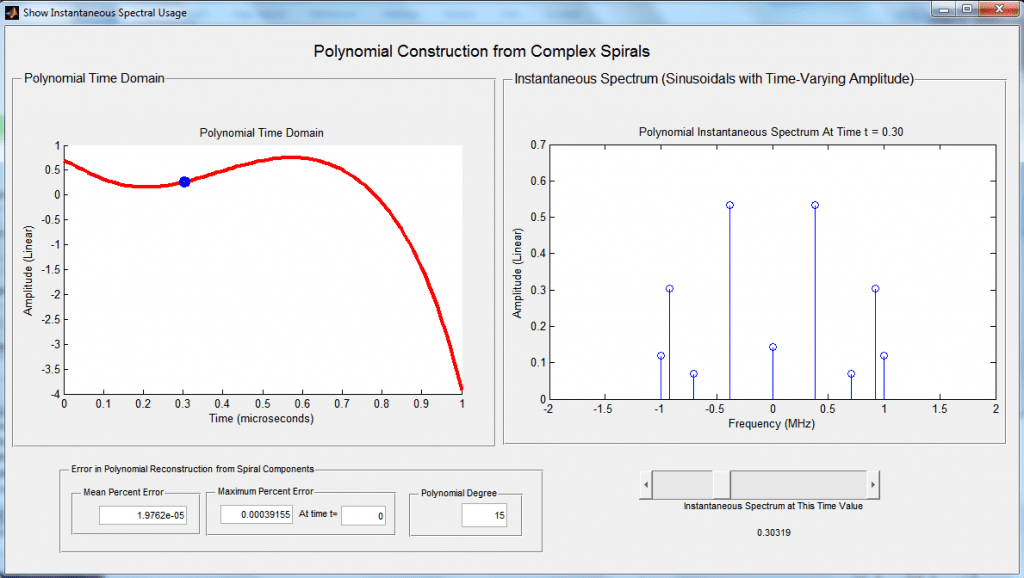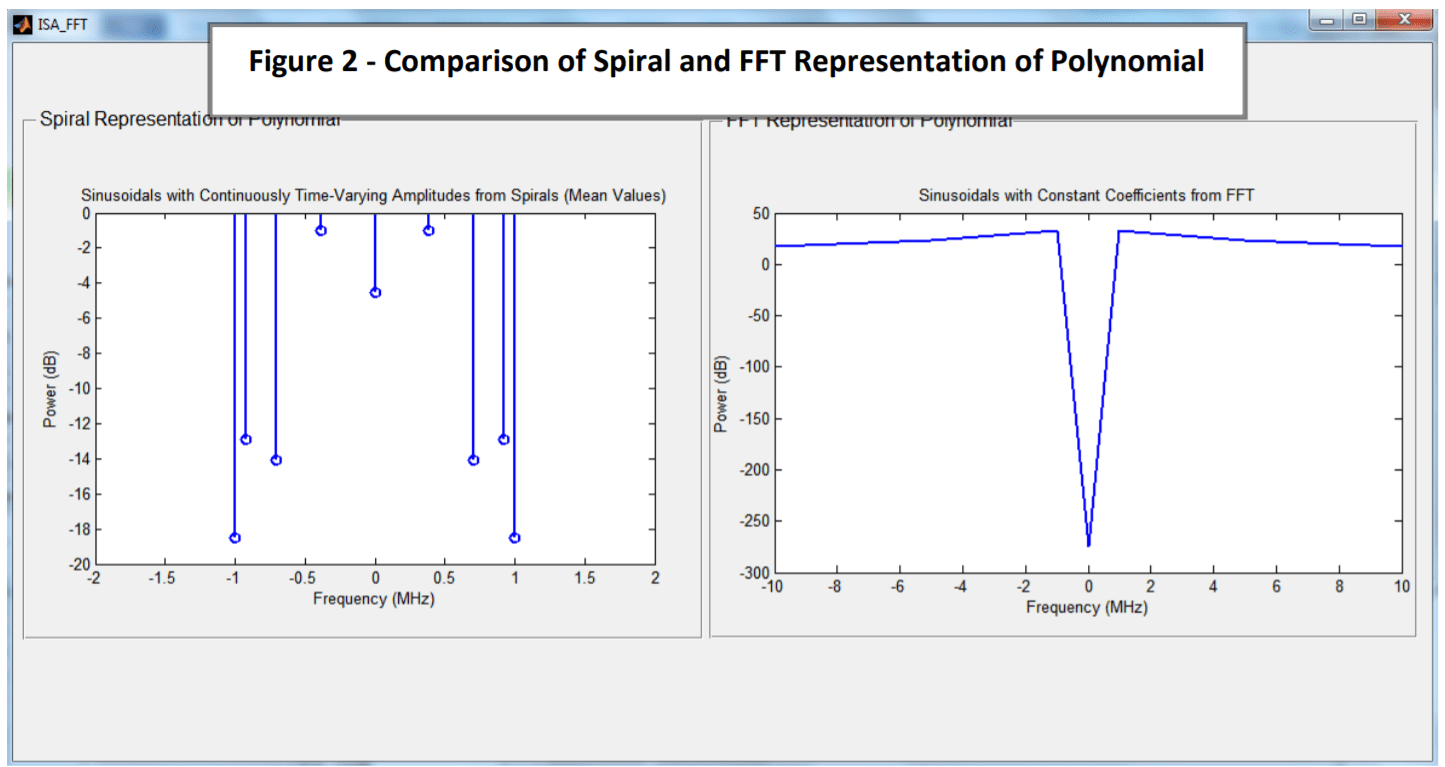Performance
Instantaneous Spectral Analysis (ISA)
Astrapi has introduced a ground-breaking technique for constructing and analyzing signals using sinusoids with continuously-varying amplitude. Instantaneous Spectral Analysis (ISA) is a sharp break from the existing practice of representing signals as sinusoids which have constant amplitude over some period of time. With ISA, it is possible to construct signals using only sinusoids in a limited frequency range that can convey many times more independent amplitude values (and therefore information) than is possible with standard signal modulation.


Data Transmission Using Polynomials
Any signal can be described as a polynomial, which provides a smooth curve through some set of transmitted amplitude values. ISA is an entirely new technique that can construct any polynomial using a limited number of sinusoids all having tightly-bounded frequencies. Using ISA, any signal transmitted in time “T” can be constructed using only sinusoids with smoothly time-varying amplitudes and frequencies of 1/T or less. Figure 1, generated from Astrapi’s ISA Toolkit, shows an example of a random 15th degree polynomial with a transmission time of 1 µs that is constructed entirely from frequencies of 1 MHz or less. The right panel displays the instantaneous amplitude values for the 9 sinusoids used to construct the polynomial at time t=0.3. The ISA construction of the polynomial agrees with direct evaluation of the polynomial, generated from its coefficients, to much less than 1% error across the entire evaluation interval.
Relationship to the Sampling Theorem
In the Figure 1 example, a random polynomial of degree 15 specifies 16 independent amplitude values. For transmission time T = 1 µs and bandwidth B = 1 MHz, the number of transmitted amplitude values is 16×B×T. According to the sampling theorem, the maximum number of amplitude levels that could be reconstructed without aliasing is 2×B×T, so the ISA construction shown above exceeds the generally accepted data throughput limit by a factor of 8.


What Does This Mean for Channel Packing?
We are used to thinking of bandwidth as being defined by what is produced by an FT. Actually, however, what an FT tells us is “if you want to represent this time-domain signal using sinusoids with constant amplitude, this is the range of frequencies and their amplitudes that you will have to use.” As we have seen, ISA allows us to construct a signal using a much smaller frequency range by using continuously varying sinusoidal amplitudes. From an economic perspective, bandwidth usage is defined by channel packing separation. How closely can two channels be placed to each other in the spectrum without interfering with each other? For instance, if we put a traditional signal 1 MHz above the ISA example (rather than the 8 MHz minimum that the sampling theorem implies is necessary), will either impair the other? The ISA signal will not be impaired because it neither generates nor requires frequencies outside of its 1 MHz band.
The traditional signal will not be affected because the ISA signal does not modulate sinusoids outside of the 1 MHz ISA band.
